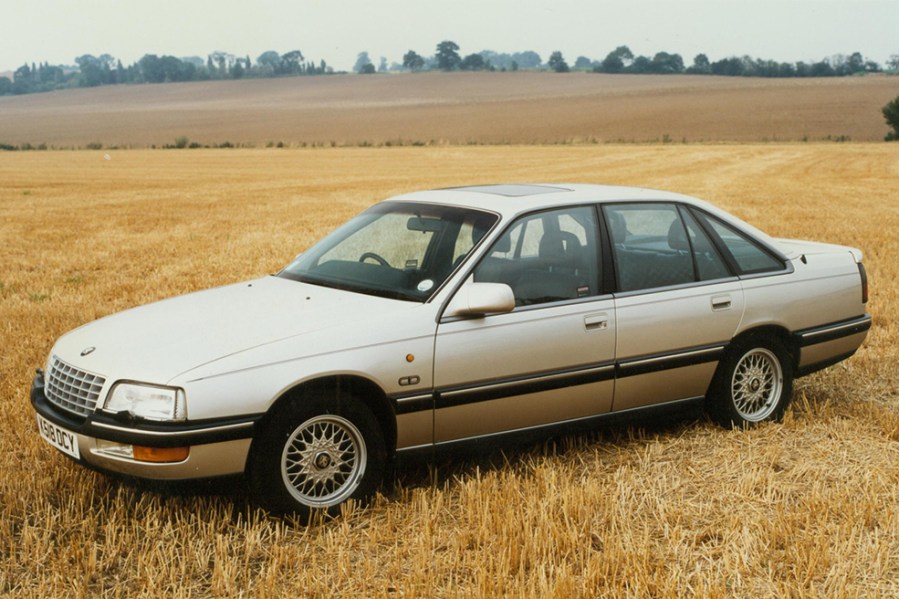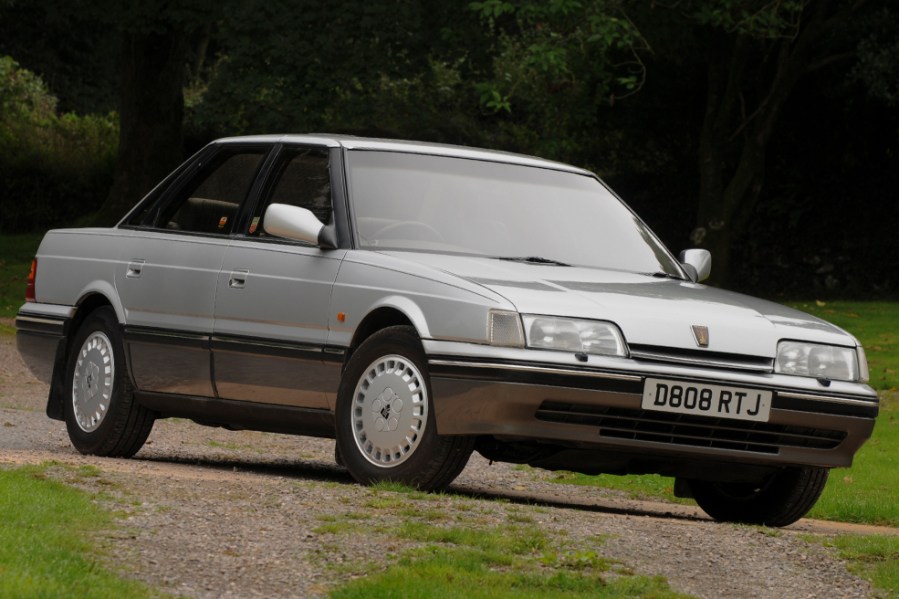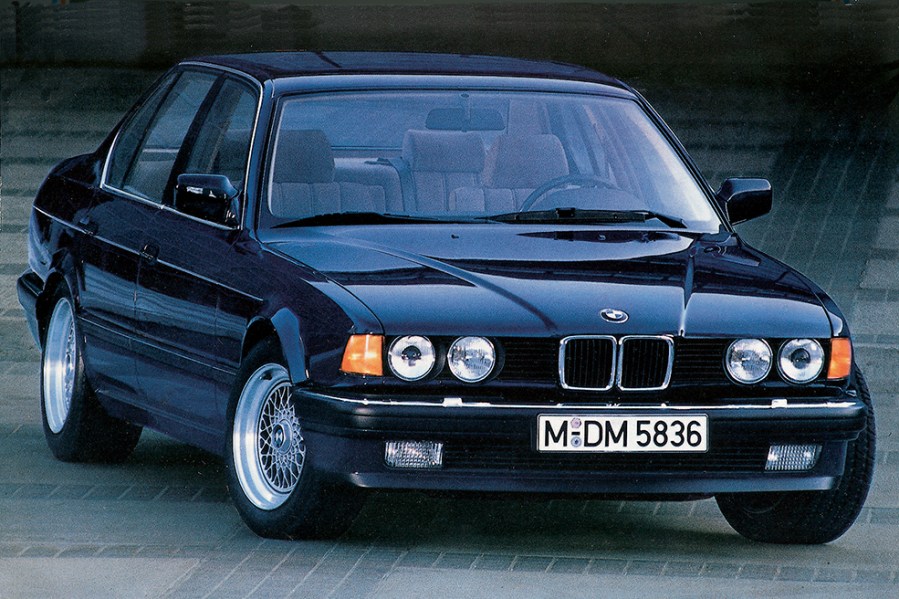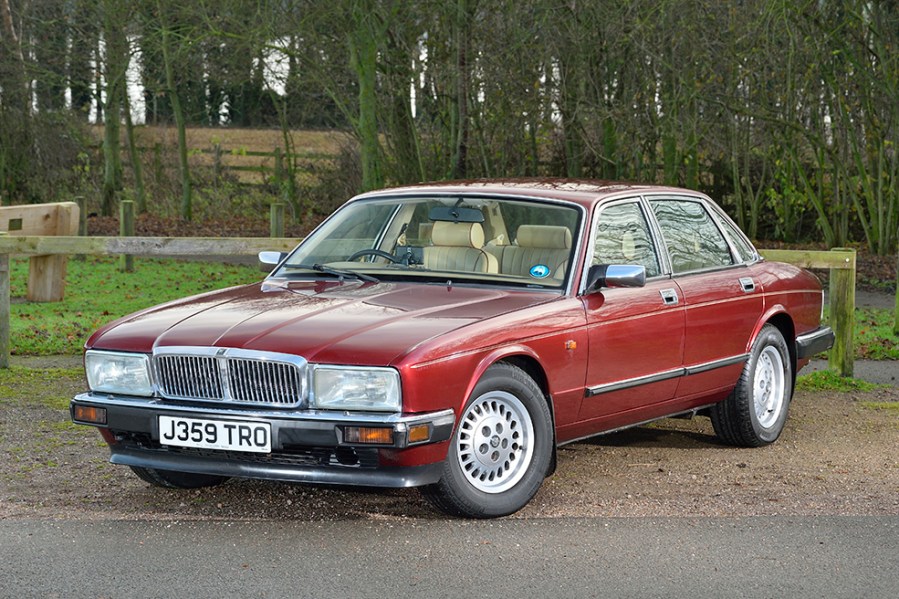Executive saloons were big business in the 1980s. Here are our favourite plush three-box saloons from the era
The 1980s were something of a peak time for executive saloons, with company cars all the rage and just about every manufacturer offering a three-box saloon to grab some market share. Long-running models entered new, better-than-ever generations, while competitors entered the fray with all-new models to take on the mainstream. Trim and engine options were numerous and styling across almost all competitors was squared-off and handsome; it was the final era of the true three-box saloon as the 1990s loomed.
Here are some of our favourite classic executive cars of the 1980s – many of which soldiered on into the following decade and set the tone for their successors.
Jaguar XJ40
For some time the XJ40 wasn’t considered a ‘proper’ classic Jaguar by enthusiasts. As a result, you could pick up an example for not too much money. This attitude has changed in recent years, however, so now’s the time to snap one up if you still need to scratch the British executive saloon itch.
From the off the car was a hit; deposits flew in and buyers were excited for its arrival. But this was also its pitfall – production was rushed to meet demand, causing reliability issues and quality that wasn’t up to the usual standard.
Today, an XJ40 with good history and under 100,000 miles is a good bet if it’s in nice condition. Many of the aforementioned issues will have been sorted out – and if not, there are numerous specialists on hand to help.
Mercedes Benz 190E
The W201 190E was the first of Mercedes’ compact executive saloons as it looked to enter a new market to continue good sales figures. In fact, the 190E was so successful that it went on to sell 1.8 million in its production run up until 1993. The C-Class that followed continued its success in the compact segment up to present day – which goes to show the importance of the 190E in Mercedes’ history.
Of all the various models on offer it was the 2.6-litre straight-six that was the pick of the bunch. It offered strong performance at a reasonable price but without compromise on comfort, as opposed to the equivalent BMW 325i, which was altogether more sporty in its approach.
With classic squared-off styling and Mercedes famed longevity and depth of engineering, any 190E makes for a great classic today – we’d be inclined to avoid the slower four-cylinder cars, however.
Ford Granada Mk3
It may seem unlikely given Ford’s modern-age tactic of SUV niche-filling but there was a time when saloon cars were the Blue Oval’s bread and butter. First introduced in 1972, the Granada sat at the top of the range and continued to do so in Mk2 guise from 1977 to 1985.
The last Granada was the Mk3, introduced in 1985 and sporting a much more modern look than the car it replaced. There was the option of a saloon, estate or hatchback, along with the usual range of Ford engines: 1.8 and 2.0-litre four-cylinders and a few Cologne V6 units. The car was badged as a Scorpio on the continent, but the name was used here as a top-end trim level.
Today the Granada feels remarkably modern: the Sierra-esque styling has aged well and well cared-for examples won’t upset those used to contemporary cars. It’s hard to imagine a better large family classic.
Vauxhall Carlton/Senator
If the Ford Granada was a budget Mercedes, the Vauxhall Carlton was a budget BMW. Both the Carlton and 5 Series led the field with fitting Bosch Motronic injection and ignition systems, both benefitted from clever suspension work to tame their rear-wheel-drive, and both were clearly geared towards storming the autobahn. Of course, the big difference between the two was cost. A 2-litre BMW was about £1000 more than the equivalent new Carlton in 1986, this despite the Carlton was a generation ahead and better equipped. Then the Senator was introduced in 1987, a year after the Carlton, coming only with the six-cylinder engines offered at the top of the Carlton range, and with some further refinements to justify its list price closer to the £20,000 mark. The Senator was better equipped inside, and even enjoyed some exclusive features underneath like switchable dampers and progressive bushes.
The range began with 1.8 and 2.0-litre four-cylinders, GL and CD specifications while the Senator took on the 2.5-litre, later 2.6-litre, and 3.0-litre sixes powering cars that were so loaded that they could only offer a small handful of options like heated seats and automatic transmission. The one we probably all remember best, with a mixture of emotions I’m sure, is the 3.0-litre 24-valve Senator. This 204bhp engine was in fact seen in the Carlton GSI first, a car that is also now a top classic of the range. At £16,999 in 1987, the GSI really was a bargain performance saloon, and at £25,400 in 1990 (about £4000 more than the GSI given inflation) the Senator 24-valve was pretty good value too; only an extra £1250 was needed to grant your standard Senator with police-type performance. Let’s gloss over the Lotus Carlton.

Rover 800
While Jaguar was bravely dipping into the market below with its usual deftness of marketing, Rover was hitting the mass executive car market head on with its new front-drive 800. It was introduced in 1986 with two 2.0-litre engines, in carburetted or fuel-injected forms, a 2.5-litre V6 from Honda and a 2.5-litre VM diesel. While there is some nostalgia for these run-of-the-mill models, it’s surely the Vitesse introduced in 1988 that will spark the most interest, as it did then. There’s no extra power from the later 2.7-litre Honda V6 compared with the standard 827i introduced alongside, but it did have sharper suspension settings and the sleeker fastback shape with a rear deck spoiler and alloy wheels.
You could have bought one of the last Rover SD1 runout models for £15,000, and that would have been pretty much near the top of the range. The 825i’s base price was £15,870, but for the top of the range Sterling that climbed to around £19,000. With its facelift in 1991, the price had climbed to £25,995 for the 827i, mostly reflecting inflation. Those were strong figures, putting it in tough company, not least the Jaguar. Today, provided you can find one, a budget of £5000 will find you a really nice example, but such is their rarity that the very best – and that often includes most Vitesses – can actually be above this. After many intermediate years of values being on the floor, they’re bouncing back to challenge everyone else again.

Audi 100
The C3-generation Audi 100 was the new executive saloon car that got to market before anyone else. Introduced in 1982, it debuted the package of features that would come to define the class, like a low coefficient of drag (0.30), fuel injected engines with aluminium heads, lightweight construction, and neat, fairing in of exterior details like the wipers.
We also know it for its charismatic five-cylinder engines and clever quattro all-wheel-drive system. The 100 was progressive enough that Audi was finally able to make meaningful inroads on the BMW and Mercedes market segment, particularly with its range-topping 200. The 100CD was already priced above the Ford Granada 2.8, at about £11,000 in 1983, while the turbocharged 200 quattro of 1985 was no less than £23,043. Today, prices for the Ford and Audi are much closer together.

BMW 7 Series (E32)
BMW launched the second-generation E32 7 Series in 1986 and it arrived on the scene at roughly the same time as the XJ40. Naturally comparisons were made, but in truth the 7 Series was the better performer – and arguably better-looking. The Jaguar was the more comfortable of the two executive saloons, however. Initially the BMW was available in six- and 12-cylinder versions before being offered with a V8 in 1992.
For all its luxury and good looks, the BMW’s pitfall today is with maintenance and repairs. It suffers from the same Nikasil issues as the Jaguar XK8, although this only affects the later V8 engines – so for those looking for the 80s V12 model, fear not.
Prices today aren’t unreasonable either, with even the larger-engined cars remaining relatively attainable, at least for now. Grab one while you can!






